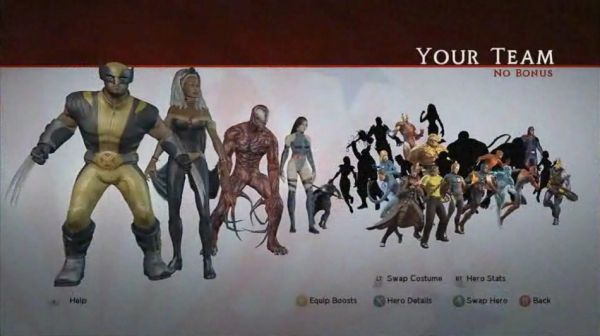

Over two dozen heroes and villains are available for play, and the special powers of any two super-beings can be combined into a new, even more powerful "fusion" ability. While all the heroes and villains can perform basic maneuvers such as leaps and melee attacks, each also has a distinct superpower. Co-operative multiplayer modes for up to four are available, both online and for same-screen players. Players can switch control between the characters, while the computer takes control of additional teammates. In most scenarios, a team of four Marvel heroes battles a path through areas teeming with high-tech defenses, heavily armed thugs, and rival superhero and supervillian enemies. As in Marvel's earlier 3D action games (such as titles in the X-Men Legends series, as well as the original Marvel: Ultimate Alliance), role-playing aspects also influence the adventure, with gamers choosing which heroes to control, and how to improve their various superpowers and abilities as they gain experience by defeating enemies and accomplishing goals.

The game is a mission-driven action-adventure with a focus on small-squad combat, viewed from an isometric perspective.


Once again, the role-playing elements see you upgrading your team, unlocking new heroes and shopping for new abilities in fact the only significant difference is this game's combination fusion powers set off by two characters together and more often than not resulting in screen-filling eye candy. I n exactly the form set out by its predecessor, Marvel: Ultimate Alliance 2 sees you wander from room to room with your team of four superheroes, feverishly mashing buttons until all faceless henchmen are dead, before occasionally employing the same tactic on a supervillain or two.


 0 kommentar(er)
0 kommentar(er)
